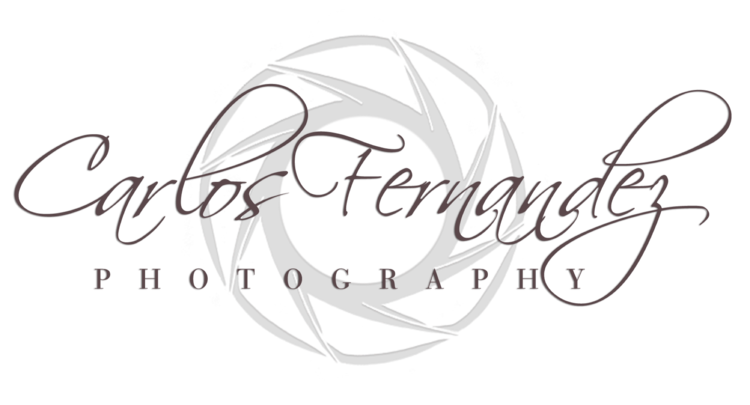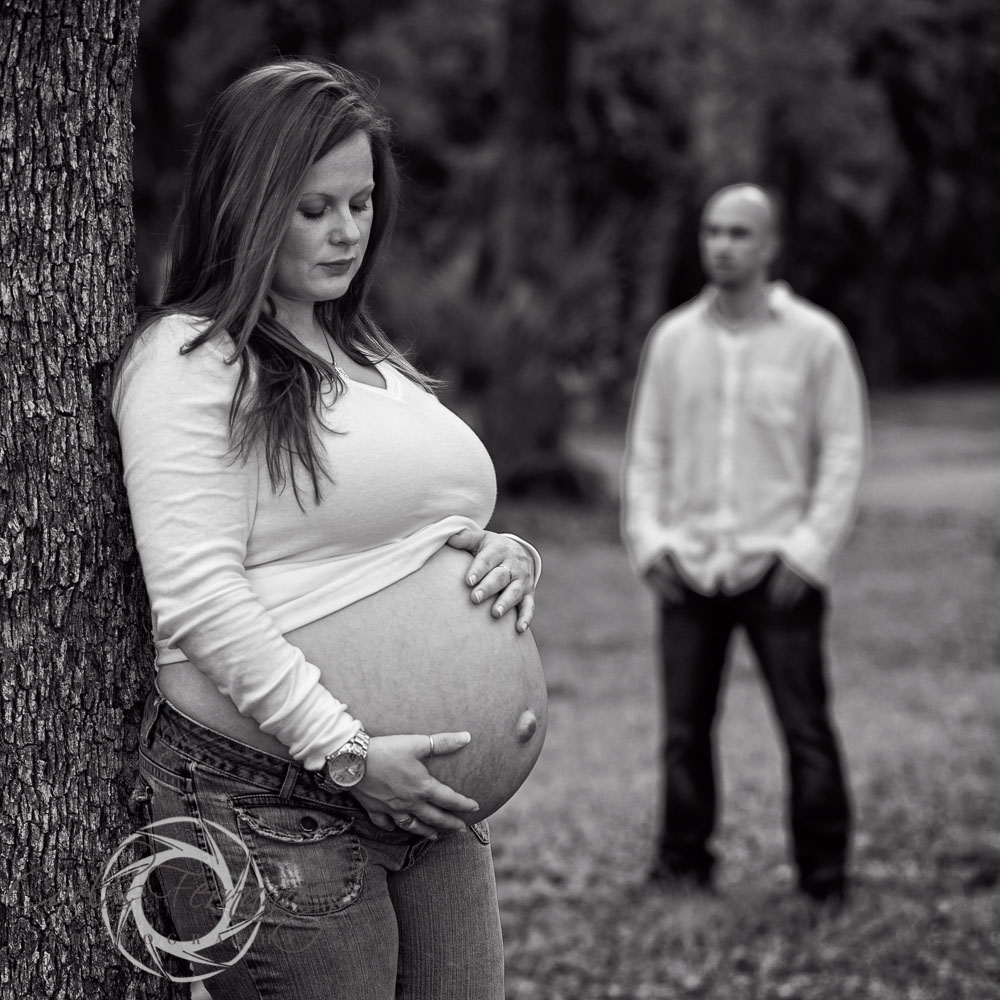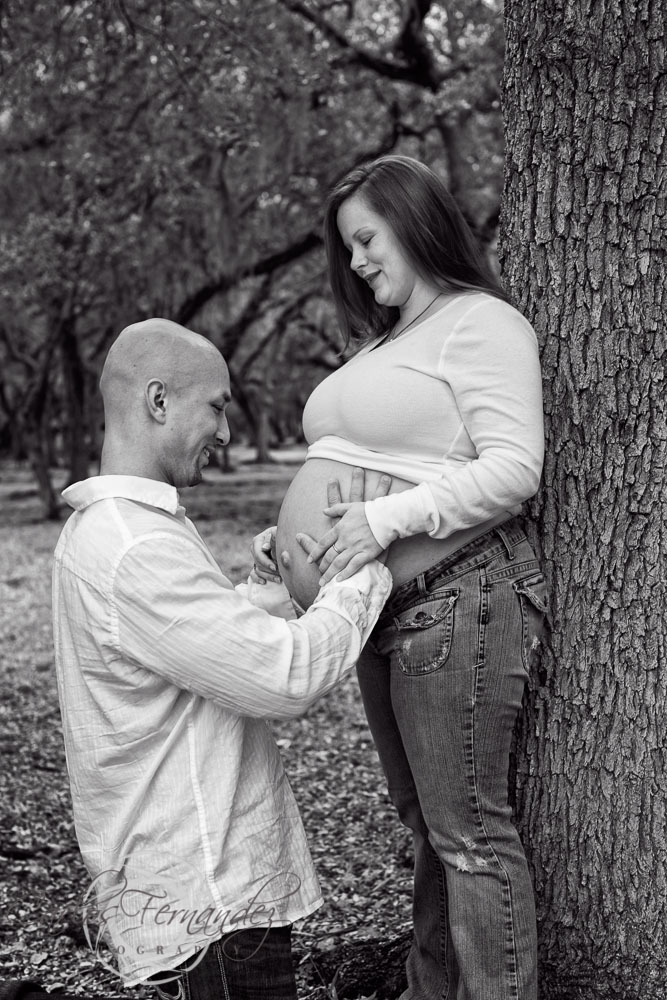I met Tessa and Jeremy at Matheson Hammock Park for a portrait session of Tessa's Baby Belly. It is true what they say about a pregnant woman having a beautiful glow about them. Tessa is beautiful and just to keep you posted Aidan was born shortly after Christmas and is home with them. Jeremy and Tessa are a special couple and Jeremy was a good sport with all of my posing requests. Originally I posted and delivered these in color with a few Black and White images thrown in, in this post I wanted to emphasize and show the strength of B&W. If it was up to me the vast majority of my portraiture would be B&W because you are attempting to gain the emotion and character of the subject(s). It is my feeling that the color in the image is irrelevant in most portraiture. Of course there are always exceptions. Those exceptions in my opinion would be when the color is important to add to the image. Anyway here are six images I picked. Hope you enjoy them, and feel free to comment and/or critique.
Article
Natalia Silver
Natalia Loves Wearing Red
Natalia Loves Wearing RedI had a photo-shoot yesterday with Natalia in Wynwood. This is in Downtown Miami, and my favorite place to make images due to the various backgrounds provided by walls of art. Natalia wanted to do the shoot in Wynwood with performance artwear designed by herself. I used mainly existing light with just enough flash, backed down two stops, to get the eyes to sparkle. The key in all portraiture is to do your best to get that sparkle in the eyes. The same thing can be done with a reflector or even having your subject look at a brightly lit wall opposite them. It was a bright sunny day so I used the shadow side of the street the entire time to avoid harsh shadows. I shot with my Canon 5D Mark III, Canon 600 Flash and a Canon 70-200 mm 2.8L Lens. All of the images were shot between f2.8 and 3.2 to allow the background to drop off out of focus.
DJ Bonnie Beats
First Annual Miami Music Month Kickoff Event Images
https://twitter.com/BONNIEBEATS I was asked by New Times Miami to photograph the First Annual Miami Music Month Kickoff Event. The event was held at a space in Downtown Miami called Grand Central Lofts on N. Miami Ave. The evening started out pretty slow. I was asked me to be there at 9:30 pm. The place was empty until about 11:00 pm when the band Radioboxer got things moving. Radioboxer is a bilingual, indie-alternative rockpowerpop band from Miami, Florida. Started in 2008, their music is highly varied, mixing styles from punk and electronica with Latin rhythms and folk, with a hint of 60's and 70's music, altogether in their own genre. They are known for their dynamic shows, which include high-energy theatrics to accompany their unique style.Radioboxer has been voted the Reader's Choice "Best Band" in Miami in the newspaper The Miami New Times. The band was really good with an excellent stage presence and a fascinating show. I recommend them and plan on checking them out again. The event was great and a lot of fun to work, and the New Times Staff as always was a pleasure to work with. The image I selected to use for this post was an Environmental Portrait of DJ Bonnie Beats. I enjoy capturing the image of an individual performing something that may define them. I found Bonnie Beats to have an incredibly interesting look and asked her to pose for a few portraits. I hope you enjoy it. Bonnie Beats can be contacted on Soundcloud, Twitter, , and Facebook, or email, bonniebeats@behindcolorbars.com Additionally, everyone I met was great and loved being photographed. Thank you all for the experience. Enjoy the images! Hi resolution images are available for purchase HERE.
Jessicuh Art, a.k.a. Supergirl...
Jessicuh Art, a.k.a. Supergirl...
On my last post I spoke to a lot of people that love to be photographed. I was able to connect with Jessicuh Art that wanted some images made in a couple of outfits including a new SupergirlCosplay outfit she had just purchased. For those of you who do not know what Cosplay is here is a brief definition. Cosplay short for "costume play",[1] is a type of performance art in which participants do costumes and accessories to represent a specific character or idea. Cosplayers often interact to create a subculture centred on role play. A broader use of the term "cosplay" applies to any costumed role play in venues apart from the stage, regardless of the cultural context. Some cosplayers choose to have a cosplay photographer take high quality images of the them in their costumes posing as the character. This is most likely to take place in a setting relevant to the character's origin, such as churches, parks, forests, water features and abandoned/run-down sites. Such cosplayers are likely to exhibit their work online, on blogs or artist websites, such as deviantART. They may also choose to sell such images or print the images as postcards and give them as gifts. So as you can see this type of photography is both desired and appreciated. Jessicuh also has several tattoos and like Cosplayers, people that are heavily tattooed are also appreciative of images of the art on their body. We did the shoot in Wynwood using the walls of art as a background. At first I thought that they may be a little too distracting, but because of the Bokeh (blur effect that high end lenses create beyond the subject) it worked out. I did some extra work by adding texture, vignetting, and borders to create subtle mood and to better direct the viewer to the subject. What I am always most concerned with is the reaction the client will have toward the final images. I am happy to say that she was more than satisfied and we had a lot of fun.
Submission Fetish Ball at Tantra, South Beach
Submission Fetish Ball
A friend was kind enough to notify me of the "Submission Fetish Ball" produced by Antonio Angelo, additionally, an excellent photographer. The event was a first for me in the world of Fetish. I met the nicest, warmest people that immediately accepted me into their world. I made it a point to respectfully ask before making images and it was appreciated. I will write more on the event, however, I wanted to give a bookmark to those that attended. In respect of privacy the more explicit images where individuals are identifiable will be posted to a private password protected web gallery. The images and Gallery will be forthcoming this evening. For event participants, click on the image above or on the FaceBook tab of the website. You will be directed to my page. You will then see a post with the link to a private gallery. The password information is in the post. This is being done for as much privacy as I can give you and still view your images. Enjoy. If you like the images please like my page.
Amelia
Discovering a Model in Amelia
I was asked by my wife to do a portrait session for a young lady celebrating her 15th birthday. I really did not know what to expect. Her 15's as it is known in the Cuban community is equivalent to a Sweet 16 or Coming Out party in the Anglo-American community. The spectrum of these parties range from one extreme to the other. Jeans and t-shirts to a Ballroom Gown with the celebrant coming out of a large clam shell. When I got to the party I found that the girls and the celebrant, Amelia were all in nice but not over the top dress. Amelia was rather reluctant at first to pose for the images but after a few discussions agreed to pose after dinner. I was a little worried because she appeared to be slightly shy but I could see that she was fun. After dinner I started to setup and decided to pose Amelia against some curtains standing and sitting. The location where the party was located limited me to select an area that was rather small. We started the session and Amelia really came into her own. She truly posed and took direction like an experienced model, and also had the body type of a model. I made some images and we talked about doing a session with her and her friends on location in the Wynwood Area of Miami, with brightly colored street art to use as a background. Her friends seemed excited about the opportunity and I will be able to make more images to boost my portfolio. All around a win-win and I had a great time. Looking forward to our Wynwood Session.
Shadows are the Soul of your Images
Shadows are the Soul of Your Images as they give shape, mood, and depth to your photography. They must, however, be used creatively, and not left to chance or environment. One of the best ways to do this is with a single off-camera light, whether held in your hand or on a stand. When I use the term light, this can literally be ANY light: a studio light, camera flash, shop light from Home Depot or even a bare hanging bulb. It need not be fancy. There are various ways to trigger the strobes/camera flash, such as a cord connected to your camera or if using the same manufacturer of flash and camera, wirelessly. After you have your light source established, now it's time to shape the light. There are several types of light modifiers on the market that will suit your needs. Bouncing flash off a white ceiling produces much softer light, where a flashlight or "on camera" flash produces harder light. The idea is to experiment with everything. In this image II used a snoot opened up on the end to give the image more of a spotlight effect to emphasize the shadows. I recommend paying a visit to B&H Photo www.bhphotovideo. com, www.strobist.blogspot.com, or even www.YouTube.com. They all have tutorials and an abundance of information on photographic lighting.
How a Concept Becomes an Image.
[caption id="attachment_1375" align="alignleft" width="940"]
What do Peter Frampton and the Miami Marlins have in common?
The answer to the title would not be readily known to many who have not lived in Miami for quite a time. Before the Miami Marlins, then the Florida Marlins became a major league baseball franchise, their closest sibling would have been the Minor Leaugue Miami Marlins that were a farm team under the Baltimore Orioles. This would have been in the 1970's and prior. During the height of his career Peter Frampton came out with Frampton Comes Alive, one of the best selling albums of all time. During the Frampton Comes Alive Tour in 1977, Peter Frampton played in Miami with Gary Wright, famous for Dreamweaver. The concert was held at the old Miami Baseball Stadium which also hosted the Miami Marlins as a minor league team. The stadium has long since been abandoned and the images below are of the inside of the stadium today. Enjoy!
Miami Stadium (also known as Bobby Maduro Miami Stadium) was a basebal stadium in Miami, Florida. It was primarily used for baseball, and was the home field of the Miami Marlins minor league baseball team, as well as other minor league teams. It opened in 1949 and held 13,500 people. It was also used as the Spring Training home of the Brooklyn and Los Angeles Dodgers from 1950-1958 (for most of their "A" games). The Dodgers played their first game as the Los Angeles Dodgers at the ballpark when they opened their 1958 spring training schedule against the Phillies on March 8, 1958 in front of 5,966 fans.[1] It was used during the spring by the Baltimore Orioles from 1959-1990. At the time of its construction, Miami Stadium was remarkably modern and well-appointed, although in time it would be surpassed by later designs.On June 6, 1958, Orioles president James Keelty Jr. reached agreement with Miami Marlins president George B. Storer to move the Orioles spring training home from Scottsdale, Arizona to Miami Stadium for the 1959 spring training season.[2] On May 25, 1990, the Orioles announced that the team would move their spring training home games from Miami Stadium to Bradenton and Sarasota in 1991. The Orioles had trained at Twin Lakes Park in Sarasota prior to spring games in 1989 and 1990.[3]The stadium was located on the block bounded by Northwest 23rd Street (south - first base), Northwest 10th Avenue (west - third base), and Northwest 8th Avenue (east - right field), with an open area behind left field extending about a block north.A distinguishing feature of the ballpark was a high arched cantilever-type roof over the grandstand, in contrast to the typical styles of either flat and slightly sloping, or peaked like a house. This design enabled the ballpark to have a roof that covered most of the spectator area without any posts blocking the spectators' view. Al Lopez Field in Tampa, Florida employed a somewhat similar design with a less dramatic curve and less coverage.When the Florida Marlins were established in 1993, the new club opted for Joe Robbie Stadium, the home of the Miami Dolphins football team, a much larger facility than Miami Stadium.The City of Miami had proposed razing the stadium and selling the property for warehouses. But a sale price of $1.6 million plus demolition cost of $725,000, scared away would-be developers.


















